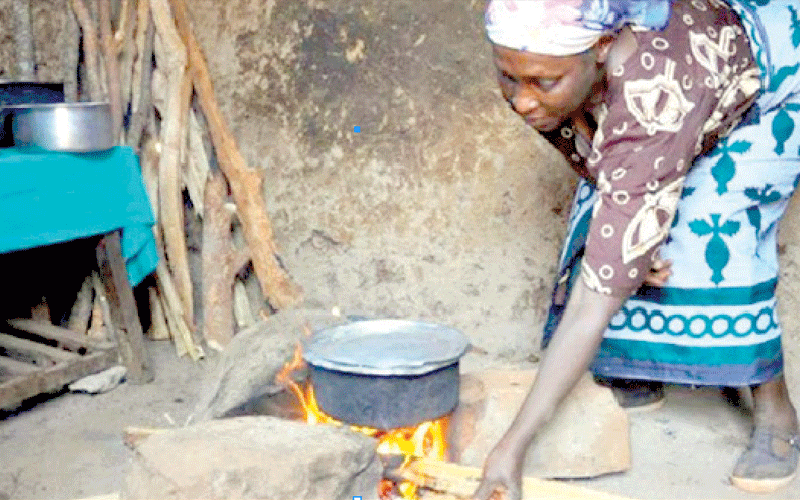Gains in clean cooking at risk of reversal

Milliam Murigi @millymur1
Growing up, one needed not to be in the kitchen to know whether someone was preparing a meal.
Smoke from the kitchen was a clear indication. Back then, almost all households used an open fire to cook.
Nowadays, things have changed with the introduction of clean cooking technologies such as improved cook stoves designed to reduce fuel consumption per meal and to curb smoke emissions, biogas, liquefied petroleum gas, electricity, which are smokeless, noiseless and more energy-efficient.
Though fuel-efficient cook stoves and clean fuels sector is evolving rapidly, enabling cross-cutting solutions that can achieve greater development impacts, the widespread use of these technologies in Kenya still remains and will continue to be a distant dream if nothing is done.
Many incentives
“Things were moving on well until recently when the government decided to reintroduce Value Added Tax (VAT) on solar and cookstove products.
Customers will now part with 14 per cent VAT, something that will erode gains the country had made so far in reaching the population with affordable cookstoves and set back the agenda on access to clean cooking,” says Peter Scott, CEO Burn Manufacturers, the makers of Jiko Okoa and Kuni Okoa.
Scott adds that since the sector previously enjoyed exemption, manufacturers were able to reduce the overall cost of products.
But with the reintroduction of VAT, manufacturers will be forced to increase the price, resulting in a negative impact on the market.
For the past few years, the government and other actors have been advocating for use of clean cooking technologies, however not all projects have been successful.
For example, a 2016 government project to provide Liquefied Petroleum Gas (LPG) to 4.3 million low-income households who could not afford the product at normal market rates collapsed after only two years.
At the time it had consumed Sh3 billion without posting any noticeable increase in LPG penetration among the targeted populations.
“A lot of incentives are needed if we want to achieve our target of ensuring about 10 million households are using clean cooking energy by 2022.
However, reintroducing VAT has made those who were about to transit to clean cooking methods to hold back their plans,” says Scott.
Available research shows that 80 per cent of Kenyan households rely primarily on solid fuels for their cooking needs, with 8.1 million households using wood and 1.3 million households using charcoal.
Only 3.7 million households use LPG as their primary fuel, and only three per cent own electric cooking appliances, despite that these appliances represents the cleanest alternative for cooking, but are seldom used in developing countries due to high costs of electricity and limited access in rural areas.
Willing but unable
“Kenyans are willing to transit to clean cooking technologies, however high cost has always been the major hindrance.
Cultural practices have also been another major hindrance as most people believe in a three-stone open fire.
There is also this myth that whatever you use for cooking needs to be used for warming the house,” says Clean Cooking Association of Kenya (CCAK), Chief Executive Officer, David Njugi.
To ensure all the gains made haven’t been eroded, Njugi says that a lot of awareness needs to be created about the importance of these technologies to ensure that those who have already transitioned don’t go back to the traditional method.
This is why CCAK recently held a week-long campaign to take stock of the success of various initiatives they have introduced in different parts of the country.
They also plan to have more campaigns to create awareness about available clean cooking technologies and educate the public on the benefits of adopting them.
Countless benefits
Other than the creation of awareness, the government also needs to set aside some funds to catalyse the growth of the clean cooking sector in Kenya.
With such funding, it will be possible to have 10 million households using clean cooking solutions by 2022 and economically impact at least seven million women in Kenya.
“Kenya has an estimated 21,000 deaths annually attributable to household air pollution caused by traditional cooking methods.
If Kenyans embrace clean cooking technologies as a country, we will be saving around Sh200 billion annually, money which is being used to treat indoor pollution-related complications,” said Njugi.
Clean cooking solutions can help address deforestation and forest degradation.
There is solid evidence that cooking with clean cook stoves and fuels improves public health by reducing harmful emissions of particulate matter and black carbon.
These solutions also reduce emissions of major climate forcing agents including both greenhouse gases and short-lived climate pollutants.












